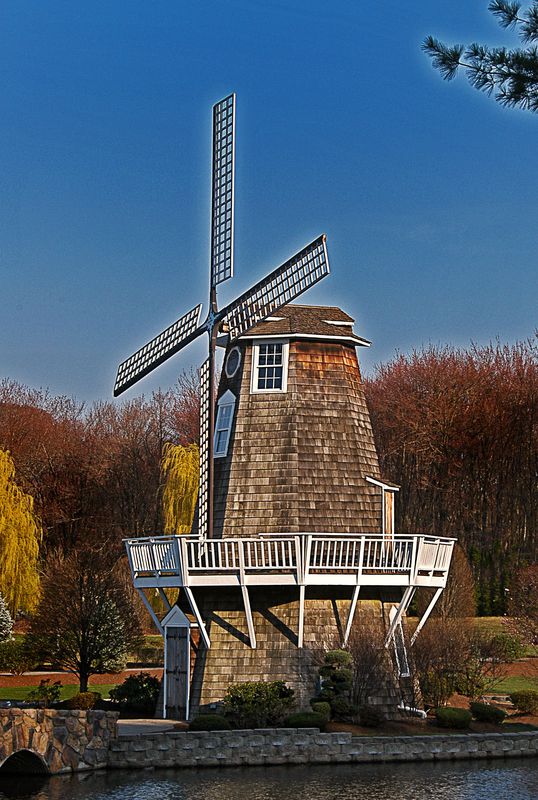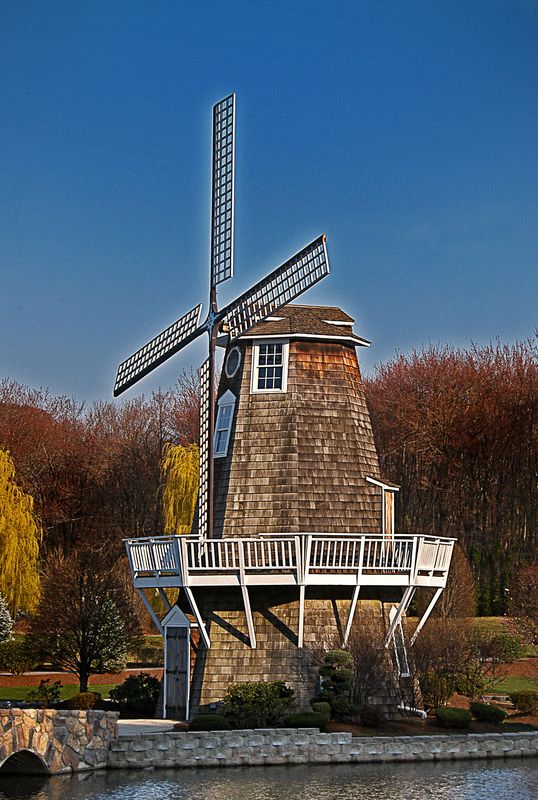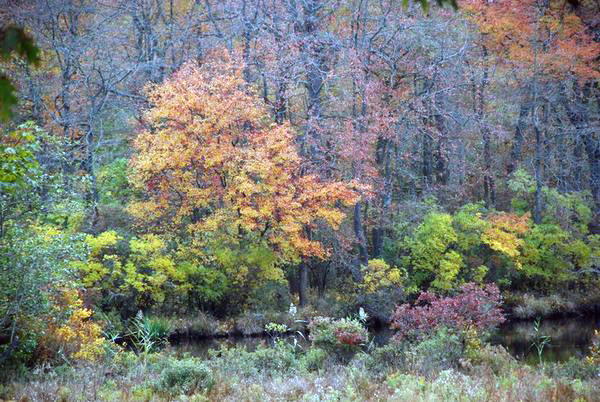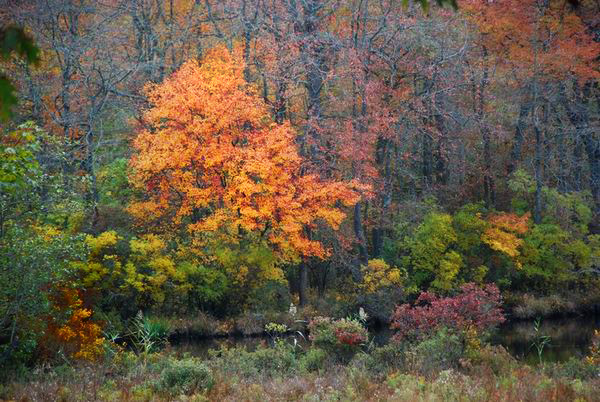Posts for: abc1234
Nov 5, 2011 12:44:22 #
"And as far as post processing after the fact the only filter that cannot be accurately duplicated is a polarizing filter. They can do much more than darken skies."
A polarizer does one thing and one thing only: reduce non-coherent light. In photography, that means darkening skies and objects having a certain orientation to the sun and polarizer and reducing reflections on reflective surfaces.
I submit that in this context, as soon as you add any filtration, you are no longer duplicating accurately the scene. And then, accuracy depends upon what you saw, what you remember you saw, and what you recorded. I am not a purist. All I want is a pleasing and interesting picture. To that end, I do not care if I tweak it in the camera or on the computer.
I leave accuracy to the photojournalists.
A polarizer does one thing and one thing only: reduce non-coherent light. In photography, that means darkening skies and objects having a certain orientation to the sun and polarizer and reducing reflections on reflective surfaces.
I submit that in this context, as soon as you add any filtration, you are no longer duplicating accurately the scene. And then, accuracy depends upon what you saw, what you remember you saw, and what you recorded. I am not a purist. All I want is a pleasing and interesting picture. To that end, I do not care if I tweak it in the camera or on the computer.
I leave accuracy to the photojournalists.
Nov 5, 2011 09:22:26 #
The picture has potential and a problem. Let us deal with the problem first: the light halo around the objects in front of the sky. Looks like too much sharpening and I do not like it.
Another observation is that the picture is not plumbed horizontal. I like pictures to be plumbed straight if there is a logical frame of reference. However, this is a matter of taste.
If this were my print, I would like for the windmill to pop away from the background. I do not know if you can accomplish this in the camera but if you do any post-processing, then play around with the picture. I would play with the saturation, vibrance, contrast and sharpness of the windmill while leaving the background alone. Finally, I would add just the slightest vignetting to draw the eye to the windmill.
A picture is worth a thousand words....
Another observation is that the picture is not plumbed horizontal. I like pictures to be plumbed straight if there is a logical frame of reference. However, this is a matter of taste.
If this were my print, I would like for the windmill to pop away from the background. I do not know if you can accomplish this in the camera but if you do any post-processing, then play around with the picture. I would play with the saturation, vibrance, contrast and sharpness of the windmill while leaving the background alone. Finally, I would add just the slightest vignetting to draw the eye to the windmill.
A picture is worth a thousand words....


Nov 5, 2011 08:36:31 #
UV filters may have been a little value under certain circumstances for older films. Some films captured some UV light causing some haziness. The difference was very small and useless for most pictures. People then rationalized their use by using them or clear filters to protect lenses.
I suggest that you shoot on a sunny day to see if a UV filter matters. And then shoot without it and adjust the picture to match the one taken with the filter. A second filter may absorb the UV light making that filter unnecessary.
As for ND filters, I am not quite sure why you need them anymore. Change the ISO. Or adjust the picture in post-processing.
I love polarizers. However, digital reduces their need for darkening skies and increasing saturation. If you want to avoid post-processing, then use them. Otherwise, fix the pictures later. If you want to eliminate reflections, then use them.
Good luck.
I suggest that you shoot on a sunny day to see if a UV filter matters. And then shoot without it and adjust the picture to match the one taken with the filter. A second filter may absorb the UV light making that filter unnecessary.
As for ND filters, I am not quite sure why you need them anymore. Change the ISO. Or adjust the picture in post-processing.
I love polarizers. However, digital reduces their need for darkening skies and increasing saturation. If you want to avoid post-processing, then use them. Otherwise, fix the pictures later. If you want to eliminate reflections, then use them.
Good luck.
Nov 5, 2011 08:13:54 #
"Please note that the diffusion circle we knew and loved in the older silver based camera is gone and replaced by something rather ugly in digital cameras."
The circle of diffusion is an optical property. It only relates to a lens and has absolutely nothing to do with the camera or the medium.
Since the photographer could nothing about it except, perhaps, buy a more expensive lens, one would use its practical embodiment in the form of a depth-of-field table.
And what is the "rather ugly" replacement with digital cameras?
The circle of diffusion is an optical property. It only relates to a lens and has absolutely nothing to do with the camera or the medium.
Since the photographer could nothing about it except, perhaps, buy a more expensive lens, one would use its practical embodiment in the form of a depth-of-field table.
And what is the "rather ugly" replacement with digital cameras?
Nov 4, 2011 06:00:12 #
I would do the classes first. Then, I would go to the library and study photography going back to about 1900.
The neat thing about photography is that is both science and art. Even though I am a scientist, the science is a means to an end, an artistic or journalistic end. You have to be good at the nuts and bolts: shutter speeds, f-stops, depth of field, "film" speeds, and the rest. You want them to be second nature. A great thing about digital photography is that the cameras make the nuts and bolts easy and out of the way of your shooting. That is, they leave you with more time for the creative.
While the Internet is a treasure trove of tips and technics on both the art and science, it lacks one very important feature: real-time interaction with a mentor. That is why I suggest taking a class or two in an adult education program or at a local community or junior college. Nothing beats working with an interested teacher and classmates.
My second advice was to look at photographs. Get books, go to exhibits, look online. I am attaching two links below. Figure what you like artistically and technically. Build your own vision around that. Do not copy other photographers; let their work inspire you.
Oh, I think I remember something about buying a new camera. I am unfamiliar with the 40D but I do have the 60D. If the 40D is merely an older version of the 60D, I suspect it has pretty much everything you need at the time. Need, not want. I do not care how good or expensive the camera is, if you do not understand how to use the basic and some intermediate bells and whistles, it is just a very expensive, complicated point and shoot camera. Just think of the equipment and darkroom work that produced fine images years ago. Even the 40D is a better camera and darkroom than those pioneers could have ever imagined.
Good luck with all this.
http://extras.denverpost.com/archive/captured.asp
http://www.npr.org/blogs/pictureshow/2011/11/03/141983255/exhibit-exalts-new-yorks-early-radical-photographers
The neat thing about photography is that is both science and art. Even though I am a scientist, the science is a means to an end, an artistic or journalistic end. You have to be good at the nuts and bolts: shutter speeds, f-stops, depth of field, "film" speeds, and the rest. You want them to be second nature. A great thing about digital photography is that the cameras make the nuts and bolts easy and out of the way of your shooting. That is, they leave you with more time for the creative.
While the Internet is a treasure trove of tips and technics on both the art and science, it lacks one very important feature: real-time interaction with a mentor. That is why I suggest taking a class or two in an adult education program or at a local community or junior college. Nothing beats working with an interested teacher and classmates.
My second advice was to look at photographs. Get books, go to exhibits, look online. I am attaching two links below. Figure what you like artistically and technically. Build your own vision around that. Do not copy other photographers; let their work inspire you.
Oh, I think I remember something about buying a new camera. I am unfamiliar with the 40D but I do have the 60D. If the 40D is merely an older version of the 60D, I suspect it has pretty much everything you need at the time. Need, not want. I do not care how good or expensive the camera is, if you do not understand how to use the basic and some intermediate bells and whistles, it is just a very expensive, complicated point and shoot camera. Just think of the equipment and darkroom work that produced fine images years ago. Even the 40D is a better camera and darkroom than those pioneers could have ever imagined.
Good luck with all this.
http://extras.denverpost.com/archive/captured.asp
http://www.npr.org/blogs/pictureshow/2011/11/03/141983255/exhibit-exalts-new-yorks-early-radical-photographers
Nov 2, 2011 12:20:04 #
I hope to have prices tonight and will let you know.
Nov 2, 2011 07:16:54 #
It is a Canon Digital Rebel. I think they also call it 300D. The lenses are Canon. The circular polarizers are 52 mm and 58 mm. The Expodisc and sunshade are 58 mm. One 512 M Sandisk CF card and two 2 G Sandisk Ultra II cards.
17-85 mm: 67 mm
18-55 mm: 58 mm
80-200 mm: 52 mm
Let me know if you want more information.
17-85 mm: 67 mm
18-55 mm: 58 mm
80-200 mm: 52 mm
Let me know if you want more information.
Nov 1, 2011 08:12:16 #
Camera sold. Remaining items are relisted under "Canon lenses and accessories for sale".
Nov 1, 2011 08:03:35 #
This is wrong place to post this but why not.
I am selling a DURST 606 ENLARGER. This is a great machine that enlarges color and black and white negatives from 8 mm to 6x6. Like new.
Chemicals: a few compounded chemicals but mainly bulk chemicals. Both black and white and color. Many formulae available.
Many stainless steel and plastic tanks and roll film reels.
Ask for details.
I am selling a DURST 606 ENLARGER. This is a great machine that enlarges color and black and white negatives from 8 mm to 6x6. Like new.
Chemicals: a few compounded chemicals but mainly bulk chemicals. Both black and white and color. Many formulae available.
Many stainless steel and plastic tanks and roll film reels.
Ask for details.
Nov 1, 2011 07:51:37 #
A lot of good advice here and a wonderful touch up.
Nothing beats studio lighting. However, for grab shots or candids, you are left with on-camera lighting. I mount a separate flash on the camera and put a diffuser on it. Here is the key: tilt the flash up. For close-ups, tilt it straight up. For further subjects, tilt it down gradually but no more than 45 degrees. At ten feet or so, remove the diffuser; you cannot see an effect.
I do not bounce off of ceilings. Too much loss and you can get casts with colored ceilings.
If you do not have a separate flash, try a hankerchif or white plastic in from of the built-in flash.
Nothing beats studio lighting. However, for grab shots or candids, you are left with on-camera lighting. I mount a separate flash on the camera and put a diffuser on it. Here is the key: tilt the flash up. For close-ups, tilt it straight up. For further subjects, tilt it down gradually but no more than 45 degrees. At ten feet or so, remove the diffuser; you cannot see an effect.
I do not bounce off of ceilings. Too much loss and you can get casts with colored ceilings.
If you do not have a separate flash, try a hankerchif or white plastic in from of the built-in flash.
Oct 28, 2011 08:17:16 #
I hope you do not mind my touching up your picture. I use Photoshop only because I have it for my business. You can probably accomplish the equivalent results using most photo-editing programs.
I used the auto-levels, contrast and tone tools to adjust the first picture. The second was edited with the Viveza plug-in which has adjusting tools as in Photoshop but is easier for small areas. In addition to one global adjustment, I manipulated brightness, contrast, saturation and color in eight areas in your photo. Sounds overwhelming. Just takes time to learn the tools, practice to make them second nature and a vision of where you want to go with the photo. This is only one vision; every person has his or her own vision. And you can have multiple visions for the same picture.
The lesson here is that you may have a gold mine. You just have to work it to find out. Good luck and thanks for the opportunity to work on your picture.
I used the auto-levels, contrast and tone tools to adjust the first picture. The second was edited with the Viveza plug-in which has adjusting tools as in Photoshop but is easier for small areas. In addition to one global adjustment, I manipulated brightness, contrast, saturation and color in eight areas in your photo. Sounds overwhelming. Just takes time to learn the tools, practice to make them second nature and a vision of where you want to go with the photo. This is only one vision; every person has his or her own vision. And you can have multiple visions for the same picture.
The lesson here is that you may have a gold mine. You just have to work it to find out. Good luck and thanks for the opportunity to work on your picture.


Sep 12, 2011 09:57:17 #
This has nothing to do with film versus digital.
If you want to do photojournalism, I agree with you. Thou shalt not manipulate. However, for any other form of photography, the photographer is free to do how little or how much he or she cares to do.
Film and digital are the same from the artistic standpoint. The tools happen to be different. I started in the darkroom in 1959 and ended around 2006. Furthermore, I am a chemist. As much as I liked darkroom work and as valuable it is to taught you to learn and burnish your artistic outlook, digital has film beat totally. This is just not the speed and ease of manipulation but also for the precise control of the image.
I love traditional photography and have many cherished prints from that era. However, I do not look back because digital is so far superior. In fact, if you want to buy darkroom equipment, I have some left. My biggest complaint about digital: you shoot so many more pictures.
So, not long live film and chemicals but rather rest in peace. And thank you for having improved the world.
If you want to do photojournalism, I agree with you. Thou shalt not manipulate. However, for any other form of photography, the photographer is free to do how little or how much he or she cares to do.
Film and digital are the same from the artistic standpoint. The tools happen to be different. I started in the darkroom in 1959 and ended around 2006. Furthermore, I am a chemist. As much as I liked darkroom work and as valuable it is to taught you to learn and burnish your artistic outlook, digital has film beat totally. This is just not the speed and ease of manipulation but also for the precise control of the image.
I love traditional photography and have many cherished prints from that era. However, I do not look back because digital is so far superior. In fact, if you want to buy darkroom equipment, I have some left. My biggest complaint about digital: you shoot so many more pictures.
So, not long live film and chemicals but rather rest in peace. And thank you for having improved the world.
Sep 11, 2011 23:07:51 #
GENorkus wrote:
Should you find a quality made polarizer marked with a PL instead of CPL marking on the ring, don't get it for your digital camera. The PL was made for film cameras. To a degree, it will still work but not as well.:
PL types interfere with autofocus; CPL does not. Has nothing to do with film versus digital.
Sep 11, 2011 21:15:43 #
New2blog wrote:
I was planning on asking the group why the CPL rotates within its frame? (so this is the perfect opportunity)
The physics is such that it removes incoherent light. That is, light that is not traveling in parallel to the lens. The filter has crystals lined up in a certain direction. You have to line up the incoming light with the orientation of the crystals. You do that by rotating the filter. Some filters have a spot that you line up with the sun.
For it to work effectively, you have to have a lot of direct light, not scattered light as on a cloudy day. Rotate the filter and notice the effect. If you are wearing polarizing sun glasses, everything goes black when the two polarizers are perpendicular to each other. So, do not forget to take them off.
Hope this helps.
Sep 11, 2011 20:05:41 #
Regina Berryman wrote:
Yes totally! Thank you. I need Photoshop! Do you use it often?
Regina, Photoshop is powerful but very hard to learn. Start with a photo editing program first and then move up. I use Adobe Bridge but you probably have to buy this with Creative Suite. They also have Lightbox. You might want to look at that. Corel Photo-Paint is very good. Powerful like Photoshop but easier to learn.
Good luck.